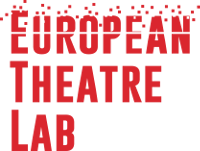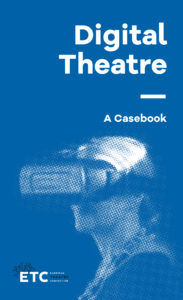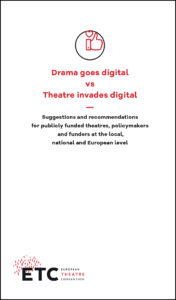Picture taken by Jonnyh31 and used under a CC license
A brief history of and ideas on augmented reality
Similar to virtual reality, augmented reality is a tool that alters what we can see and offers a few interesting ways to be used in the arts. Probably the first sign of augmented reality was the head-mounted display named Sword of Damocles, which was developed by Harvard Professor Ivan Sutherland in 1968.
However, the term itself was not coined until 1992, when 2 men at Boeing by the name of Caudell and Mizell mentioned it in a paper. In the early 90’s, AR was also used in hospitals, i.e. at UNC’s Chapel Hill, where a fetus was depicted digitally and should thus easily prenatal care.
During the 90s, augmented reality was also used in the arts. One such example is Julie Martin, an Australian woman who created a show called Dancing in Cyberspace, which was funded by the Australia Council for the Arts. Said show features acrobats who play with virtual objects.
In the late 90s (from 1997-2001), the Government of Japan and Canon, the well known Japanese company, initiated the Mixed Reality System Laboratory, where they conducted research about different matters regarding augmented reality. Among other things, they developed a system called MREAL System for Mixed Reality (MR), which blends computer generated images into the real world and thus works as a perfect example for augmented reality. Canon uses the system mainly in manufacturing. However, this technology offers many options, which means it could also be used in theatre. Imagine having to not just pretend you’re talking to a a dead person, but actually seeing the ghost of that person through AR glasses! Once theatre directors start including these possibilities in their imaginary work, a new dimension of theatrical experience is possible.
A well-known scientist in the field of augmented reality is Steve Mann. This Canadian professor not only holds a degree from MIT, but has also come up with a number of devices that use augmented reality. One example is the EyeTap, which turns the human eye into a monitor and a camera at the same time.
There have also been theatre companies that actively made augmented reality a part of their play. CoLab Theatre and their show Fifth Column, which involves spies and escaping bad folks in the streets of London make for a great role model. But the use of augmented reality is not just limited to the UK or Europe. There is a Singaporean play called Everyman, The Ultimate Commodity, that has debuted at the Toronto Fringe Festival in 2007. This play involves a fair amount of augmented reality and deals with the price of a human life.
A production called Elements of Oz, which features AR and was shown in Montclair New Jersey (in the US), even used augmented reality in such an impressive manner that the New York Times wrote about it. Thanks to an app, audience members can see great images, like tornado and rain when Dorothy’s house flies around.
Technological companies are also interested in combining technology with theatre. One such example is a collaboration between Atos, the Avignon Festival and the organisation Theatre in Paris. With the help of augmented reality, subtitles can translate a play’s dialogue and thus also make it more relatable und understandable for an international audience. Bringing a play to more people through modern technology is a great example of how AR can help theatres to attract new audiences.
Augmented reality offers a few more interesting options, one of the most popular is gamification. A recent example is Pokemon Go; the game that lets its players catch Pokemons all over a city. This principle of making something more interesting by turning it into a game ( thus the name gamification), is a great approach to involve younger audiences. It could be used for tours through a theatre with the help of an app, but also artistically in using apps for interactive performances that bring in a new layer of playful audience participation and artistic expression.
How do you think audiences can benefit from augmented reality? What good examples of performances using this technology do you know? We are looking forward to your ideas and thoughts.



Zakharious Tours
Zakharious Tours ist spezialisiert auf Deutsche Ausflüge in Ägypten. Unser Ziel ist es ihnen perfekte und professionelle Ausflüge zu bieten in kleinen Gruppen oder privat.